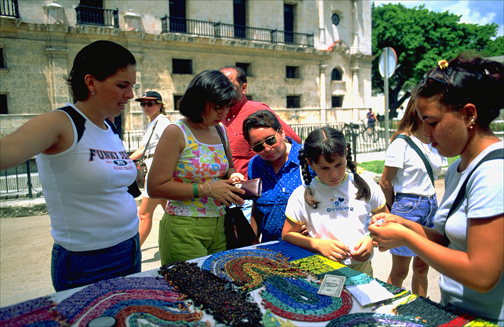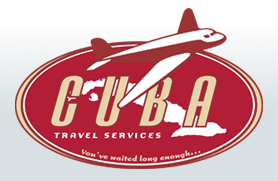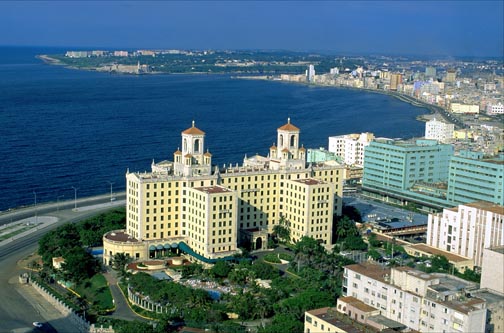Cuba hopes for U.S. travel boom, as charter flights remain grounded


Cuba’s annual tourism revenues have jumped by 622 percent in the last 20 years, from $402 million in 1991 to $2.5 billion in 2011, while the island now has 58,188 hotel rooms. (Credit: Larry Luxner)
A record 2.84 million tourists visited Cuba last year, up 4.5 percent from 2011 figures (by comparison, only 326,000 tourists came to Cuba in 1989). More than one million of them came from Canada, with large numbers also visiting from the United States — mainly Cuban-American exiles and those on specially licensed humanitarian or people-to-people excursions. Other important sources of tourism to Cuba are Latin America, Russia and, increasingly, China.
Cuba’s annual tourism revenues, meanwhile, have jumped by 622 percent in the last 20 years, from $402 million in 1991 to $2.5 billion in 2011, while the island now has 58,188 hotel rooms.
Yet an expected boom in charter flights to Cuba from a dozen U.S. gateway cities has fizzled out, leaving behind frustrated airline officials who had hoped for a bonanza resulting from President Obama’s recent lifting of restrictions on “people-to-people” travel to the communist-run island.
In early February, the weekly flight between Los Angeles and Havana made its last trip — the latest victim of a sharp reduction in U.S.-Cuba charter flights that industry officials blame on vastly overblown predictions of a boom in demand.
Cuba Travel Services of Long Beach, run by businessman Michael Zuccato, announced it had cancelled its once-a-week, nonstop flight after the chartered United jetliner returned to LAX because of a lack of passengers.
The month before, Miami-based ABC Charters and Xael Charters announced they would cancel two Tampa-to-Cuba flights. ABC shut down its weekly flight to Holguín as of Feb. 28, while Xael ended its one flight to Havana per week on Feb. 14.
About 45 charter flights now operate weekly from the United States to Cuba, down from nearly 60 last September.
“There was the exaggerated image of a great explosion in American passengers. But the point now is that there are not enough passengers to maintain all those flights to Cuba,” said Pedro González Munné, a Miami executive who monitors travel to the island.
U.S. flights mostly grounded
Back in 2011, more than a dozen “gateway” cities were authorized to offer direct charter air service to Cuba, including Atlanta, Baltimore, Chicago, Dallas-Fort Worth, Pittsburgh, Fort Lauderdale, New Orleans and Tampa. Commercial flights to Cuba are not allowed because of the 50-year-old U.S. trade embargo against Cuba, and charters require special U.S. government permits.

Cuba Travel Services of Long Beach cancelled its once-a-week, nonstop flight after the chartered United jetliner returned to LAX because of a lack of passengers.
But only a handful of those cities ever got Cuba-bound flights off the ground. San Juan did have a service to Cuba but cancelled due to weak demand, and efforts to launch service from BWI fell apart before they ever started.
Part of the reason operators are staying away is fear.
“We as license holders are scared to death of doing anything wrong, so we’re going to be sure everyone is doing what they’re supposed to do,” said Steve Cox, co-founder of International Expeditions, which began offering Cuba travel packages in 2012.
One category of licenses is actually underutilized, said John McAuliff, founder of the Fund for Reconciliation and Development: religious travel. Both McAuliff and Bob Guild, vice-president of New Jersey-based Marazul Charters, hope President Obama’s second term will usher in more Cuba travel opportunities for Americans in 2013.
“You had 50 to 60 P2P licensees last year. We think now it’s over 140. So that’s different from last year,” said Guild. “The groups finally got their renewals for two years. They now have a window to do serious business planning, and that’s an important difference [from before].”
Meanwhile, Havanatur has begun marketing a VIP concierge service to American travelers. Havantur Prestige consists of butler service at various Cuban hotels, chauffeured transportation to and from the airport, exclusive beach and pool areas, laundry and spa service. It works with hotel chains like Gran Caribe, Sol Meliá, Barceló Hotels and the Rex luxury car rental agency to fulfill such VIP requests.
Private villa and resort suite rentals can also be made available through Havanatur Prestige. So can special packages, from weddings to cigar tours, golf outings and diving excursions — a far cry from the slim pickings Amistur’s idealistic guests are offered.
It’s no coincidence that the introduction of such VIP options for deep-pocketed Americans follows the Castro regime’s warm welcome for wealthy foreigners overall — and for Cubans who defected long ago and now want to return for short visits.
Havana’s new travel policy — announced with much fanfare Jan. 14 — has resulted in a rush of Cubans seeking new passports and packing their bags. But few of those would-be travelers will be coming to the U.S. anytime soon.
Under the new law, nearly all Cubans can travel after applying for a passport and the relevant entry visa for their destination. They can stay out of the country for up to two years before they lose certain rights in Cuba, like health care and property rights.
Hotel construction flourishing
In Cuba itself, Spain’s Grupo Sol Meliá has announced the opening of the Meliá Marina Varadero Hotel, and that by 2014, the chain will open The Reserve at Paradisus Varadero, with about 250 rooms.
Gabriel García, commercial director of Meliá’s Cuba division, said the chain also plans a five-star hotel in Trinidad, located in the province of Sancti Spíritus. Meliá Trinidad — developed in partnership with Cubanacán — will have 400 guest rooms, various restaurants and bars, a fitness center and a 600-square-meter meeting room for conventions and recreational activities.
The chain also plans to upgrade its Sol Cayo Largo Hotel as well as the Tryp Habana Libre in Havana. The chain’s other two Havana properties — Meliá Cohiba and Meliá Habana — will be renovated over the next year.
For their part, foreign parties who have invested in the hotel sector to help aid such growth are reluctant to move forward with projects without knowing the future of
U.S.-Cuba relations, said Miami lawyer Tim Ashby, estimating that $2 billion would be available for future Cuba tourism development projects.






Without doubt Cuba is an amazing destination for tourist, people prefer the climate, beaches and distinct cultural history of this region.